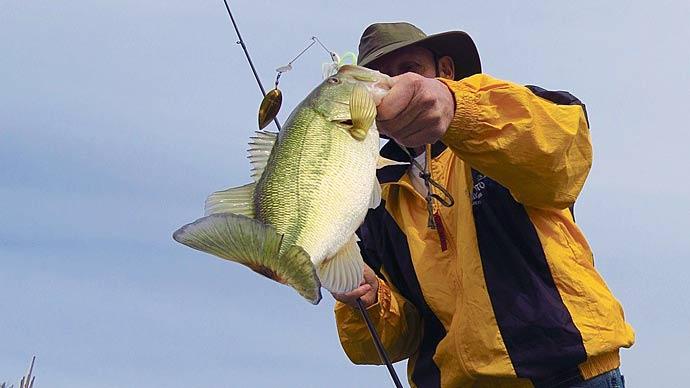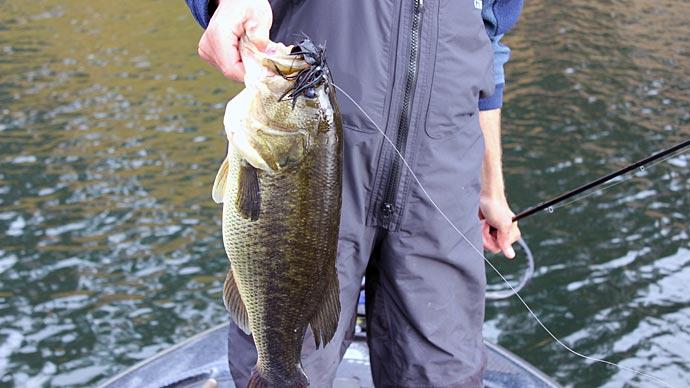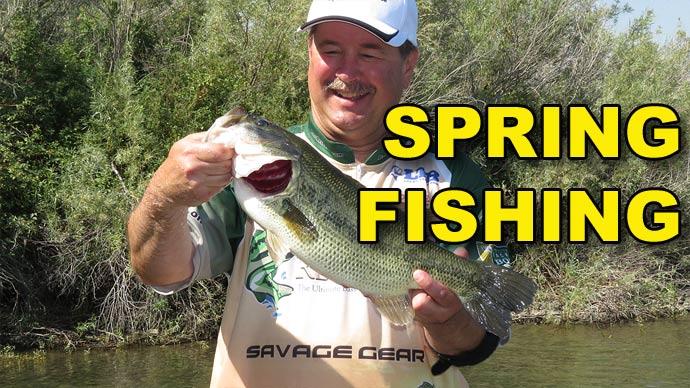
The next time you’re headed to the lake, think about how you plan to catch those fish. I say that because most anglers think about choosing irresistible lures that will entice bass into striking. However, I think anglers should focus more attention on a fish’s natural reaction, especially on those tough days when weather fronts have taken the edge off their aggressiveness or when the fish are getting a lot of angling pressure.
A bass is a predator by nature and therefore is most vulnerable to any stimulus that appeals to those natural reactions. When it’s hiding in a bush, a weed patch or against rocks and logs, the bass is in the ambush mode. Its mind-set is focused on attacking anything that comes within its zone, be it a crawfish, shad, bluegill or shiner.
Think about that for a moment. Is that fish more likely to grab something that falls in its face or something that is slinking along the bottom away from its hiding place?
I’m not saying those enticing lures or techniques don’t work at times, but rather that you’ll catch more and bigger fish by using the element of surprise instead of blindly casting a lure and trying to make it look seductive on the bottom.
You can trigger a reactionary bite with a variety of baits, including those that “entice” bass into striking. Try flipping a jig or worm into heavy cover, ripping a spinnerbait over weeds or through brush tops, banging crankbaits into rocks or stumps, or sputtering a topwater or buzzbait over shallow cover. If you make that a priority in your bass fishing, you’re going to get positive results.
If you want more evidence, look at the tournament results. When Bobby Murray won the first Bassmaster Classic in clear water on Lake Mead, he found that if he cranked a spinnerbait from behind the fish and brought it in front of their faces suddenly, he got more strikes than he did by casting where they could see it coming.
When David Gliebe won a Florida tournament with nearly 100 pounds of bass during a severe cold front, he caught them by punching a jig into matted peppergrass. The fish were holding there, and the bait fell into their faces, triggering an impulsive reaction. Meanwhile, the anglers who were trying to entice bass into striking were not catching fish.
Of course, you have to be sneaky to be successful. One of the biggest mistakes anglers make is they alert the bass of their presence. A bass may be one of the largest predators in the water, but it’s very well aware that it has predators, too – and you’re one of them.
To trigger reactionary strikes effectively, you must keep the fish at ease. You can do that by using the trolling motor quietly, being wary of the shadows you may be casting over a target and making subtle presentations. This is really critical in shallow water, especially if the water is clear.
Before moving into a potential area, take a moment to collect your thoughts about the least noticeable direction from which to attack and assess where you think the fish may be sitting up on the cover. If the water is shallow, adjust your trolling motor shaft so the prop doesn’t churn mud or sputter on the surface.
You want the initial cast to land right on the fish’s nose. With experience, you can almost predict where that will be. The more you fish during a given day, the more telltale signs the fish will provide.
For example, if you make a flip to a log and a fish swims away when the line and lure hit the water, make a mental note of where that fish was on the log and factor that in on the next log. Was it on the shallow or deep end? Was it in the thick part of a brushpile or on the shady edge? Turn that misfortune into an opportunity.
By preying on bass’s predatory and reactionary nature and picking up the clues they leave behind, you will catch more fish – even on those days when they seemingly aren’t biting.
You can find more articles, quick tips and much more at HankParker.com.




